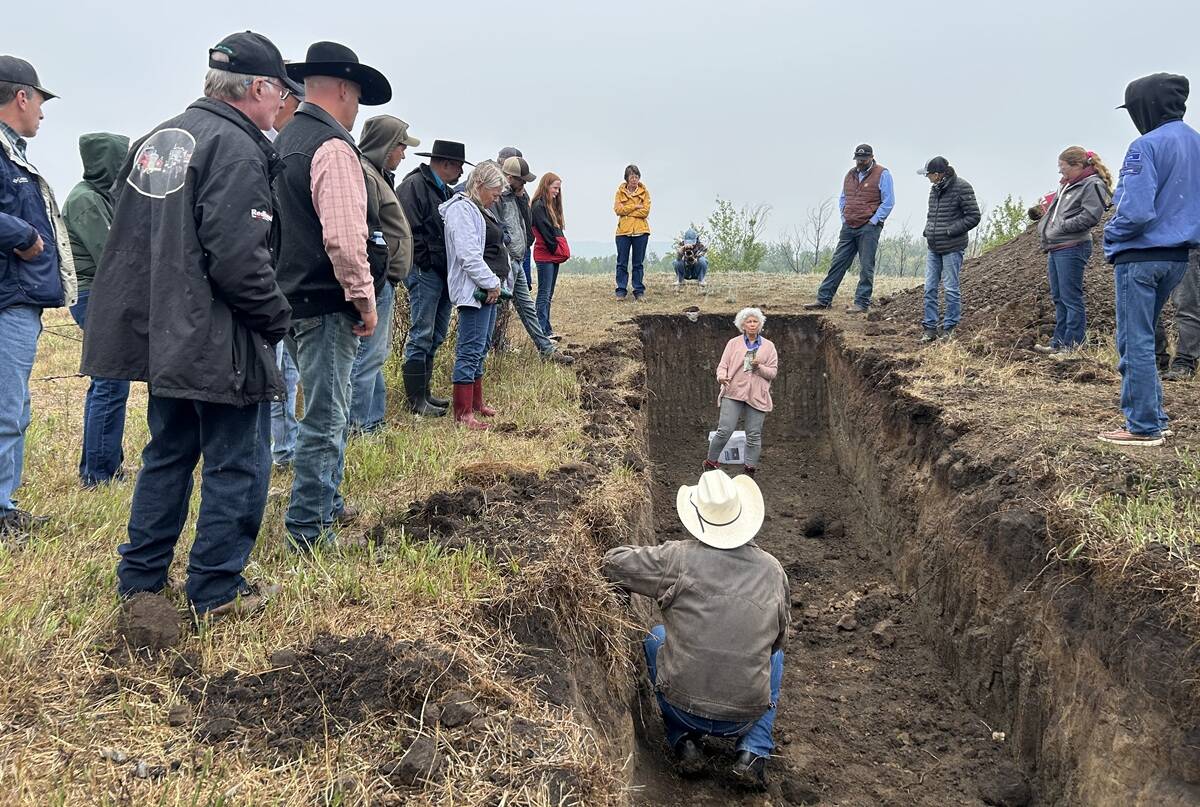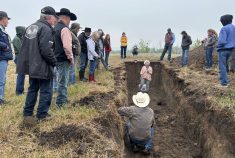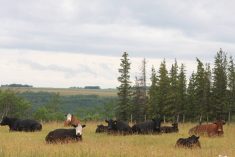Canada’s Food Guide dropped earlier this winter, and there were some significant changes. While some revisions are positive, details are hard to find.
I doubt anyone would argue with the food guide’s advice to regularly consume vegetables, fruit, whole grains and protein. Nor does its recommendations to cook more often or enjoy your food seem like bad advice (although it does seem a little condescending).
But the dietary guidelines go on to suggest: “Among protein foods, consume plant-based more often.”
Read Also

Improving soil health on the ranch
Yamily Zavala, PhD, talks soil health for farmers and ranchers at a grazing club field day at Paradise Hill, Saskatchewan.
Within the evidence review document, which is partly based on Health Canada’s 2004 Canadian Community Health Survey (the most recent national survey), is a more explicit recommendation to eat less red and processed meat, along with less added sugar and fewer refined grains. But who, exactly, needs to eat less red meat? All Canadians? Certain groups? I didn’t find a clear answer in the Canadian documents. It may be in there, but the documents are a bit of a maze.
The evidence document does note that many Canadians, across all categories, are short on calcium (among other minerals). Kind of makes a person wonder why they slashed the dairy category. People over 70 and adolescent girls had low intakes for most food groups and most nutrients, which the evidence document highlights as a concern. Still, that recommendation seems buried in the layers of documents and links.
One document cited by the food guide is a U.S. report from the 2015 Dietary Guidelines Advisory Committee. That report has detailed information on the dietary habits of Americans. For example, it states that teenage boys and men need to reduce protein intake overall. However, the same report also found that 42 per cent of Americans are consuming less protein than recommended. As well, adolescent girls and pre-menopausal women, as a group, aren’t consuming enough iron.
Given those numbers, it seems to me that experts and media should be cautious about advising Canadians in general to eat less meat. That might discourage populations that are already short on protein and/or iron from getting the nutrients they need. If people get the impression that they can simply cut out all meat and not find other sources for those minerals and nutrients, that’s a problem.
Still, there are practical ways forward. Right before Canada’s Food Guide was unveiled in January, I caught up with Dr. Sylvain Charlebois at the Saskatchewan Beef Industry Conference in Regina. He talked about the opportunity to market beef as a healthy ingredient to different segments of the population (ex. women and flexitarians). He also saw opportunity in partnering with other sectors, such as pulse producers, to reach these groups.
If you think about this at the level of a meal prepared in a home or school cafeteria, it could look like chili or lasagne that incorporates both meat and pulses. That could serve flexitarians and meat-lovers alike, nutritionally and otherwise.
Environmental impact
Canada’s new food guide goes beyond assessing the nutritional impact of food. It also dips its toe into the environmental impact of food choices, although it doesn’t wade in very deep.
Specifically, the dietary guidelines state that “there is evidence supporting a lesser environmental impact of patterns of eating higher in plant-based foods and lower in animal-based foods. The potential benefits include helping to conserve soil, water and air.”
The dietary guidelines cite three sources to back this assertion. All three sources did report environmental benefits to eating less meat and dairy.
One source is the previously mentioned 2015 report from the U.S. dietary guidelines advisory committee. Another is a review of studies that updated the work done for that 2015 report (Alignment of Healthy Dietary Patterns and Environmental Sustainability: A Systematic Review). The third was also a review of previously published research (The Impacts of Dietary Change on Greenhouse Gas Emissions, Land Use, Water Use and Health: A Systematic Review). I’ll refer to this third one as the GHG study.
These types of reviews are common, generally useful research methods. By reviewing published studies on a given topic, researchers can find patterns. Such a review is also an antidote to a single sensational study that is an outlier rather than an indicator of a wider truth.
But every research method has its shortcomings. The GHG study includes caveats, such as how raising livestock in some areas “allows humans to derive nutritional benefit from non-arable land, or to utilize crop residues and food waste.” It also notes that some studies found that replacing calories from animal-based foods with equivalent calories from nuts, fruits and vegetables would increase water use.
The GHG study also noted inconsistencies in how water use was measured. For example, some studies measured blue water (fresh water), others green water (soil moisture), and some grey. Some used a combination. How researchers measure water use will affect how they perceive the sustainability of the beef industry. For example, including soil moisture in marginal dryland pastures may inflate the water use numbers.
Canada’s new food guide ignores the limitations acknowledged by some of the same researchers it cites. While the recommendations around environmental sustainability are a small part of the current food guide, the beef industry needs to take note, as it could become a more prominent recommendation in the future. And while there’s little doubt that most Canadians aren’t eating enough fruits and vegetables, many aren’t getting enough protein and iron either. Hopefully nutritionists and meal planners working in institutions will pay attention to these nuances and complexities.
















